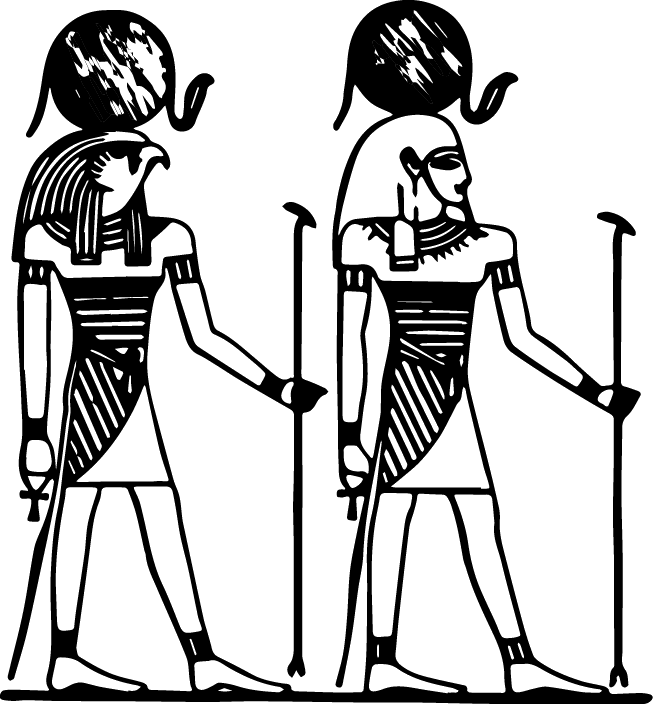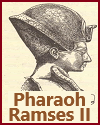| Egyptian Sun God Ra |
| www.studenthandouts.com > World History > Ancient Egypt > Ancient Egypt Maps and Pictures |
|
Two pictures of the Ancient Egyptian sun god, Ra (Re). Each is surmounted by the disk of the sun, encircled with the asp, symbolizing the power of life and death. Click here to enlarge. Ra, or Re, was a principal deity in the Egyptian pantheon. Ra, also spelled Re, was one of the most important and revered deities in ancient Egyptian mythology. He represented the sun and was considered the creator of the world and all life.  Sun God: Ra was primarily associated with the sun. He was often depicted with a solar disk encircled by a serpent on his head, which represented the sun's journey across the sky. The sun was a symbol of light, warmth, and life, making Ra a symbol of creation and renewal.
Sun God: Ra was primarily associated with the sun. He was often depicted with a solar disk encircled by a serpent on his head, which represented the sun's journey across the sky. The sun was a symbol of light, warmth, and life, making Ra a symbol of creation and renewal. Creator Deity: Ra was believed to have created the world, including the earth, sky, and all living creatures. He was thought to have brought order out of chaos. As the sun rose each morning, it was seen as a symbol of Ra's daily act of creation. Supreme Deity: Over time, Ra became a supreme deity, often taking on attributes of other gods and goddesses. He was sometimes referred to as the "Atum-Ra" or the "Amun-Ra" when combined with other deities, such as Atum and Amun. Falcon-Headed God: Ra was often depicted with the head of a falcon, which was a symbol of the sky. This falcon head was combined with the solar disk and the cobra, creating a distinctive image that represented the sun god. Symbol of Life and Renewal: Ra's journey through the sky, from sunrise to sunset, was seen as a daily cycle of life, death, and rebirth. His nightly journey through the underworld was also associated with the afterlife, emphasizing the concept of renewal and resurrection. Battles with the Serpent Apep: Ra was believed to battle the serpent Apep (or Apophis) each night as it tried to devour the sun and prevent its rebirth. These nightly battles symbolized the struggle between order (Ra) and chaos (Apep). Role in Kingship: The pharaohs of ancient Egypt were often considered the living embodiment of Ra on Earth. They ruled with divine authority, and their power was seen as an extension of Ra's divine rule. Mythological Stories: Ra was a central figure in Egyptian mythology, and various stories and myths revolved around his adventures and interactions with other deities, such as the separation of Nut (sky goddess) and Geb (earth god). Worship and Temples: Ra was widely worshipped throughout ancient Egypt. Temples dedicated to Ra were built throughout the land, with the most famous one located at Heliopolis. Worship of Ra was an essential part of daily life and rituals. The worship of Ra and the sun had a profound influence on Egyptian religion, art, and culture. Ra represented the eternal cycle of life, death, and rebirth, making him one of the most enduring and significant deities in ancient Egyptian history. |
 |
 |
 |
 |
 |
 |
|---|
| Ancient Egypt Books and Films | Ancient Egypt Outlines and PowerPoints |
| Ancient Egypt Maps and Pictures | Ancient Egypt Study Games |
| Ancient Egypt Miscellany | Ancient Egypt Worksheets |
| www.studenthandouts.com > World History > Ancient Egypt > Ancient Egypt Maps and Pictures |






